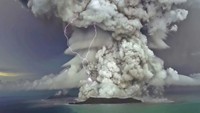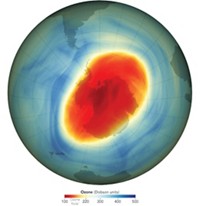Advertisement
Grab your lab coat. Let's get started
Welcome!
Welcome!
Create an account below to get 6 C&EN articles per month, receive newsletters and more - all free.
It seems this is your first time logging in online. Please enter the following information to continue.
As an ACS member you automatically get access to this site. All we need is few more details to create your reading experience.
Not you? Sign in with a different account.
Not you? Sign in with a different account.
ERROR 1
ERROR 1
ERROR 2
ERROR 2
ERROR 2
ERROR 2
ERROR 2
Password and Confirm password must match.
If you have an ACS member number, please enter it here so we can link this account to your membership. (optional)
ERROR 2
ACS values your privacy. By submitting your information, you are gaining access to C&EN and subscribing to our weekly newsletter. We use the information you provide to make your reading experience better, and we will never sell your data to third party members.
Environment
2008 Ozone Hole Fifth Largest On Record
by Cheryl Hogue
November 10, 2008
| A version of this story appeared in
Volume 86, Issue 45

This year's hole in the stratospheric ozone layer is the fifth largest on record, the National Oceanic & Atmospheric Administration announced last week. The ozone hole reached its maximum size on Sept. 12, covering an area of 10.5 million sq miles and extending 4 miles deep, according to NOAA. The record ozone hole was measured in 2006, peaking at a size of 11.4 million sq miles. Massive depletion of ozone occurs every austral spring over Antarctica, mainly due to bromine and chlorine released in the breakdown of synthetic compounds such as chlorofluorocarbons. The ozone hole's size fluctuates from year to year because of changes in wind and weather conditions. Although countries are phasing out the production of CFCs and several other types of ozone-depleting chemicals, these substances typically last decades in the atmosphere and take several years to rise to the stratosphere, NOAA says. The agency doesn't expect the effects of the phaseout to lead to a full recovery of Antarctic ozone until after 2050.




Join the conversation
Contact the reporter
Submit a Letter to the Editor for publication
Engage with us on Twitter